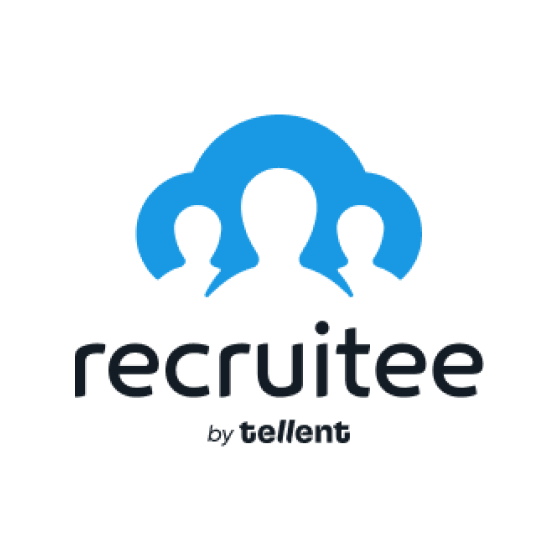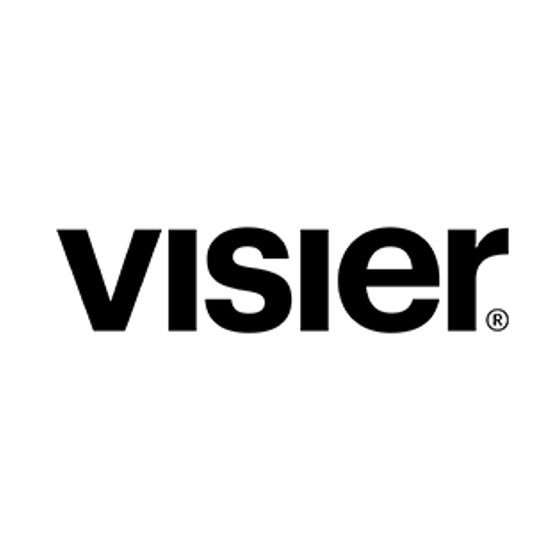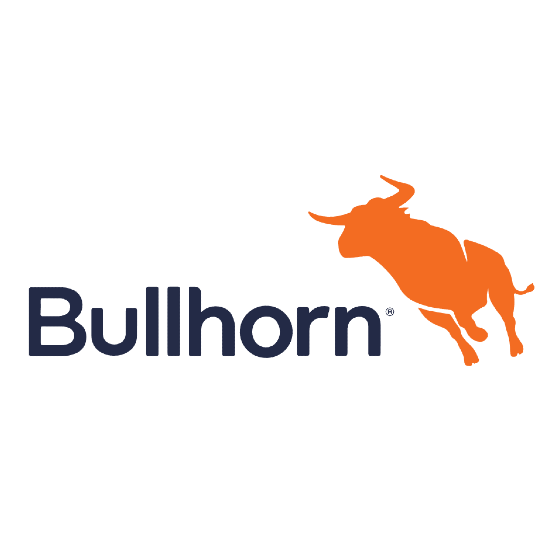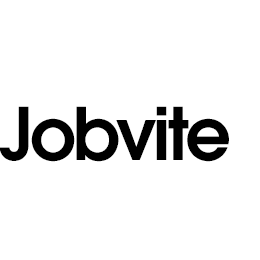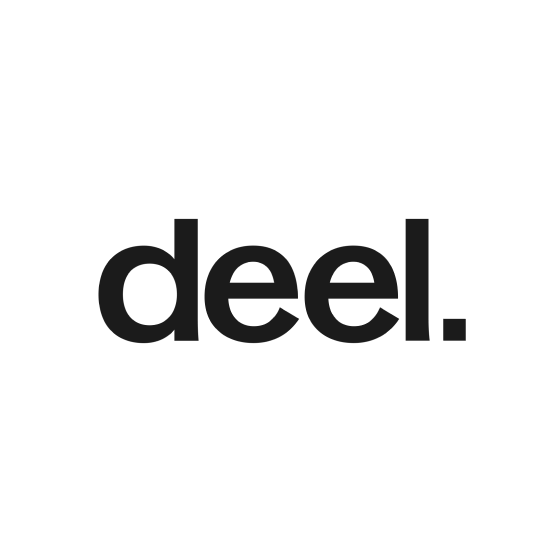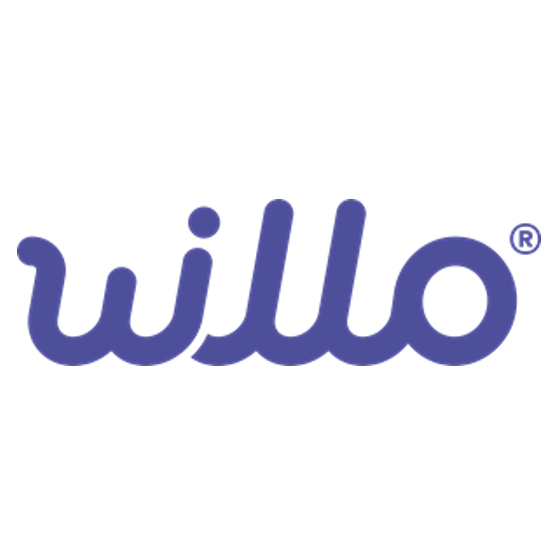10 Best Recruitment Analytics Software Shortlist
Here's my pick of the 10 best software from the 20 tools reviewed.
Get free help from our HR software advisors to find your match.
Finding the right recruitment analytics software for your needs can be time-consuming.
You're looking for a way to simplify your hiring process and make data-driven decisions, but the long list of options can be overwhelming. Don’t worry, you’ve come to the right place.
In this post, I’ll help you make this process easier by drawing on my extensive experience using and researching recruitment analytics software to guide you through the selection process.
Why Trust Our HR Software Reviews
We’ve been testing and reviewing HR software since 2019. As HR professionals ourselves, we know how critical and difficult it is to make the right decision when selecting software.
We invest in deep research to help our audience make better software purchasing decisions. We’ve tested more than 2,000 tools for different HR use cases and written over 1,000 comprehensive software reviews. Learn how we stay transparent and take a look at our software review methodology.
Best Recruitment Analytics Software: Pricing Comparison Chart
This comparison chart summarizes pricing details for my top recruitment analytics software selections to help you find the best software for your budget and business needs.
| Tool | Best For | Trial Info | Price | ||
|---|---|---|---|---|---|
| 1 | Best for data-driven decision-making | Free demo available | Pricing upon request | Website | |
| 2 | Best for recruitment analytics optimization | 14-day free trial | From $15/user/month | Website | |
| 3 | Best for collaborative hiring processes | 18-day free trial | From $269/month | Website | |
| 4 | Best for comprehensive talent acquisition and people analytics | Free demo available | Pricing upon request | Website | |
| 5 | Best for comprehensive talent insights | Free demo available | Pricing upon request | Website | |
| 6 | Best recruitment analytics software for staffing agencies | Not available | Pricing upon request | Website | |
| 7 | Best for actionable hiring insights | Free demo available | Pricing upon request | Website | |
| 8 | Best for custom skills testing with analytics | Free demo available | Pricing upon request | Website | |
| 9 | Best for strategic recruiting analytics | Free demo available | Pricing upon request | Website | |
| 10 | Best for comparing recruiting agency performance | Free trial + demo available | From $29/month | Website |
-

Rippling
Visit WebsiteThis is an aggregated rating for this tool including ratings from Crozdesk users and ratings from other sites.4.8 -

Willo
Visit WebsiteThis is an aggregated rating for this tool including ratings from Crozdesk users and ratings from other sites.4.8 -

edays
Visit WebsiteThis is an aggregated rating for this tool including ratings from Crozdesk users and ratings from other sites.4.3
Best Recruitment Analytics Software Reviews
Here are my detailed summaries of the best recruitment analytics tools that made it into my top 10 list, including notes on why I picked them. Each review offers a detailed look at the key features, pros & cons, integrations, and ideal use cases to help you find the best tool for you.
Greenhouse is a recruitment analytics tool with robust reporting and analytics capabilities. It enables recruiters and hiring managers to optimize their talent acquisition strategies effectively.
Why I picked Greenhouse: I chose Greenhouse for its comprehensive approach to data-driven decision-making in recruitment, which sets it apart from other tools in the market. I believe Greenhouse is the best for data-driven decision-making due to its advanced reporting capabilities that help identify bottlenecks and improve critical KPIs like time to hire and cost of hire.
Standout features & integrations:
Standout features include customizable reporting dashboards, advanced analytics tools for tracking key recruitment metrics, and predictive modeling for identifying top candidates.
Greenhouse integrates with various tools to enhance its functionality, including LinkedIn, Slack, Microsoft Teams, Zoom, Google Calendar, Zapier, Greenhouse Onboarding, Greenhouse CRM, Indeed, and Glassdoor.
Pros and cons
Pros:
- Offers a full-feature mobile app
- Predictive modeling for identifying top candidates
- Robust reporting and analytics capabilities for data-driven decision-making
Cons:
- Pricing details are not transparent
- Business intelligence tools are only available in their top-tier paid plan
Manatal is a cloud-based recruitment solution designed to optimize recruitment analytics. It provides in-depth analysis and detailed performance reports.
Why I picked Manatal: I chose Manatal for its comprehensive analytics suite that offers actionable insights into the entire recruitment process. Its ability to customize dashboards and generate detailed reports makes it stand out from other recruitment analytics tools. I believe Manatal is the best for recruitment analytics optimization due to its advanced reporting capabilities that help identify bottlenecks and improve critical KPIs like time to hire and cost of hire.
Standout features & integrations:
Standout features include a customizable dashboard that provides a complete snapshot of recruiting data and KPIs, a full reporting and analytics suite, and candidate reports that help optimize sourcing strategies. The tool also offers job reports for individual or overall analysis and hiring performance reports with over 20 pre-built KPIs (key performance indicators).
Manatal integrates with various tools to enhance its functionality, including LinkedIn, Indeed, Glassdoor, Google Calendar, Microsoft Outlook, Slack, Zapier, Mailchimp, Google Drive, and Microsoft Teams.
Pros and cons
Pros:
- Responsive and helpful customer support
- Comprehensive analytics suite with over 20 pre-loaded KPIs
- Customizable dashboards and detailed reporting
Cons:
- No multi-lingual user interface abilities
- Could use more native software integrations
Recruitee enhances team involvement throughout the hiring process. It stands out for enabling a collaborative approach to recruitment.
Why I picked Recruitee: I chose Recruitee for its distinct focus on team collaboration in recruitment. It differentiates itself by fostering a shared hiring environment, which is crucial for companies that value collective input. I believe Recruitee is the best for collaborative hiring processes because it provides tools that promote teamwork and transparency, making the recruitment process a unified effort.
Standout features & integrations:
Standout features include customizable pipelines, automated task management, and comprehensive reporting tools. These features aim to enhance hiring efficiency and provide insights into recruitment activities.
Recruitee integrates natively with Google Meet, Teams, Zoom, DocuSign, HelloSign, SignRequest, and HRIS systems like Sympa.
Pros and cons
Pros:
- Advanced reporting and analytics
- Team collaboration features
- Customizable recruitment pipelines
Cons:
- Offer letters could support more customization
- Limited customization options for your reports
Visier Talent Acquisition Insights is a tool that enhances talent acquisition strategies and improves hiring quality. It provides a complete view of the talent acquisition process and helps companies hire high-quality people faster and more efficiently.
Why I picked Visier: I chose Visier for its ability to analyze the full employee lifecycle, which sets it apart from other recruitment analytics software. Its comprehensive approach to talent acquisition allows for a deeper understanding of hiring quality and recruiter efficiency. I believe Visier is the best for comprehensive talent acquisition because it provides end-to-end insights covering the entire recruitment pipeline, offering a 360° view of the workforce and enabling better decision-making.
Standout features & integrations:
Standout features include a dynamic pipeline view, people analytics, talent retention, learning analytics, and workforce planning. These features give a unified picture of workforce data crucial for making informed hiring decisions.
Visier integrates with various tools to enhance its functionality, including Workday, Oracle HCM Cloud, SAP SuccessFactors, ADP Workforce Now, Ceridian Dayforce, Ultimate Software UltiPro, Kronos Workforce Ready, IBM Kenexa, Cornerstone OnDemand, and BambooHR.
Pros and cons
Pros:
- User-friendly interface that empowers leaders with insights
- Analyzes the full employee lifecycle
- Provides a 360° view of the workforce
Cons:
- Limited customization options for reporting templates
- Learning curve for mastering advanced analytics features
Phenom People uses AI and machine learning to provide organizations with deep insights to optimize talent acquisition, enhance candidate experiences, and drive hiring success.
Why I picked Phenom People: I chose Phenom People for its robust AI-driven analytics capabilities. It stands out for its focus on providing comprehensive talent insights tailored specifically for the recruitment team, making it the best choice for organizations seeking to leverage data-driven strategies for hiring success.
Standout features & integrations:
Standout features include AI-powered talent insights, predictive analytics for identifying top candidates, and personalized candidate experiences.
Phenom People integrates natively with various tools to enhance its functionality, including LinkedIn, Greenhouse, Workday, SAP SuccessFactors, Oracle Taleo, Microsoft Dynamics 365, Salesforce, Slack, Microsoft Teams, and Zoom.
Pros and cons
Pros:
- Personalized candidate experiences
- Predictive analytics for uncovering top talent
- AI-driven analytics for deep talent insights
Cons:
- Potential complexity in implementation and integration with existing systems
- Pricing details are nottransparent
Bullhorn Analytics is a comprehensive staffing and recruitment analytics platform that provides end-to-end recruitment insights across all stages of the hiring process.
Why I picked Bullhorn: I included Bullhorn in this list because of its unique focus on staffing agencies and its robust analytics capabilities that offer deep insights into the recruitment process.
Its ability to provide end-to-end insights makes it a standout choice for businesses seeking a thorough understanding of their recruitment activities. Bullhorn offers end-to-end recruitment insights anddelivers a holistic view of the recruitment lifecycle, from sourcing to hiring, which is critical for strategic decision-making.
Standout features & integrations:
Standout features that enhance recruitment processes, including individualized dashboards, performance management analytics, real-time self-serve reporting, and job pipeline management. These tools help recruiters visualize trends, manage data quality, and gamify recruitment to drive engagement and productivity.
Bullhorn integrates natively with various tools, including Bullhorn ATS/CRM, Salesforce, Invenias Executive Search, Copilot, SourceBreaker, Bullhorn Healthcare, VMS Automation, Time & Expense, Invoicing, and Bullhorn One.
Pros and cons
Pros:
- Integrations with a wide range of tools for enhanced functionality
- Customizable dashboards and reporting for data-driven decision-making
- Comprehensive end-to-end recruitment insights
Cons:
- User interface can feel clunky when performing candidate searches
- Pricing information is nottransparent
Jobvite's recruitment analytics software provides tools to make data-driven hiring decisions. It delivers actionable insights that drive smarter, faster recruitment processes.
Why I picked Jobvite: I chose Jobvite for this list because of its comprehensive analytics capabilities that stand out in the crowded field of recruitment analytics software. Its ability to provide real-time insights and actionable data makes it a powerful tool for talent acquisition teams. I believe Jobvite is the best for actionable hiring insights because it offers a standard suite of analytics tools and allows for custom report creation and peer benchmarking, which are essential for uncovering top talent and making informed hiring decisions.
Standout features & integrations:
Jobvite's recruitment analytics software is a key component of the Evolve Talent Acquisition Suite, which includes features like recruitment marketing, candidate experience, and interviewing. The platform offers over 60 standard reports, custom report capabilities, and interactive dashboards with real-time data. It also provides peer benchmarking and direct access to recruiting data through Jobvite’s Data Exchange for deeper analysis.
Jobvite integrates with ATS & Onboard, Career Sites, Source & CRM, Analytics, Employee Referrals, Internal Mobility, Job Broadcast, Candidate Messaging, ADP, BambooHR, Greenhouse, Okta, Salesforce, Slack, Workday, Zapier, Zoom, and Microsoft Teams.
Pros and cons
Pros:
- Includes a comprehensive suite of analytics tools within the Evolve Talent Acquisition Suite
- Provides peer benchmarking for comparative analysis
- Offers both standard and custom reporting for flexibility
Cons:
- Limited customization options for offer letters
- Pricing details are not transparent
Journeyfront is an intelligent hiring suite designed to assist companies in improving their hiring processes through advanced data analytics. It offers tools for sourcing, screening, assessing, and managing candidates.
Why I picked Journeyfront: Journeyfront can provide objective data through skills testing. This isn't just about assessing whether a candidate can do the job but ensuring they're a perfect fit. By using these skills tests, you're reducing the risk of making a bad hire, which can save your team time and resources in the long run. You can also create custom, job-specific scoring models that prioritize candidates based on the skills most crucial to your team. Once candidates have completed their skills tests, the platform provides you with detailed insights into their performance.
Standout features & integrations:
Standout features include scorecards that offer an objective way to measure and compare candidates against job criteria, tools for scheduling, conducting, and evaluating interviews, and customizable workflows to adapt to different hiring processes and organizational needs
Integrations include BambooHR, Taleo, Workday, SmartRecruiters, JazzHR, PageUp, ADP, Greenhouse, Oracle, SAP SuccessFactors, Indeed, Okta, Glassdoor, Emmersion, and LinkedIn.
Pros and cons
Pros:
- Ability to create customizable assessments
- Provides valuable insights about candidates
- Integrates with over 300 tools
Cons:
- Lacks features for onboarding
- Could offer more features for internal collaboration
Gem Talent Compass is a recruitment analytics platform that streamlines talent acquisition with data-driven insights.
Why I picked Gem Talent Compass: I chose Gem Talent Compass for its ability to debug the recruitment funnel and forecast hiring needs, which is critical for strategic planning. I believe Gem Talent Compass is the best for strategic recruiting analytics because it enables teams to make informed decisions based on historical data and industry benchmarks.
Standout features & integrations:
Standout features include standardized reporting templates, predictive analytics for diversity recruiting, and cost-saving insights. These tools empower teams to optimize recruitment strategies and justify change management with data-backed evidence.
Gem Talent Compass integrates with various tools to enhance its functionality, including Greenhouse, Lever, Workday, Slack, Gmail, Microsoft Outlook, Zoom, LinkedIn, Salesforce, and Zapier.
Pros and cons
Pros:
- Predictive analytics for diversity recruiting
- User-friendly reporting interface
- Powerful two-way ATS integration
Cons:
- Learning curve for mastering advanced analytics features
- Pricing information is not readily available
Deel is a cloud-based hiring platform that helps companies source and onboard talent across borders. It connects you with vetted staffing agencies, handles compliance, and centralizes your recruiting activity in one place.
Why I picked Deel: I picked Deel because it gives you detailed visibility into how each staffing agency performs. You can track key metrics like applicant volume, time-to-hire, spend, and time saved, all in one place. This helps your team evaluate what’s working and adjust quickly. Instead of managing data across spreadsheets or email, Deel centralizes everything so you can make faster, data-backed hiring decisions.
Standout features & integrations:
Standout features include a requisition builder, candidate CV management, job spec uploads, cross-border compliance, role-based access control, multi-agency management, global hiring support, contractor and employee onboarding, and centralized reporting.
Integrations include Hubstaff, QuickBooks, Slack, Google Workspace, JIRA, Brex, Expensify, NetSuite, BambooHR, Skovik, Workday, and Xero.
Pros and cons
Pros:
- Great visibility into recruiter performance
- Helps hire quickly across multiple countries
- Strong compliance support built in
Cons:
- No internal candidate database feature
- You need to rely entirely on partner agencies
Other Recruitment Analytics Software
Below is a list of additional recruitment analytics software that didn’t make it into my top 10 list, but are still worth checking out:
- Recruit CRM
For intelligent alerts
- Pinpoint
For customizable analytics dashboards
- Zoho Recruit
For predictive hiring analytics
- Workday
For AI-driven talent acquisition analytics
- Lever
For proactive recruiting analytics
- Avature ATS
For high-volume recruiting
- JazzHR
For SMB recruiting efficiency
- ClearCompany
For streamlined hiring processes
- SmartRecruiters
For data-driven hiring strategies
- AvaHR
For culture-driven recruiting
Related HR Software Reviews
If you still haven't found what you're looking for here, check out these other related tools that we've tested and evaluated:
- HR Software
- Payroll Software
- Recruiting Software
- Employer of Record Services
- Applicant Tracking Systems
- Workforce Management Software
Recruitment Analytics Software Selection Criteria
Selecting recruitment analytics software requires a thorough understanding of the features and functionalities that solve common pain points and use cases HR professionals and talent acquisition teams face. As an HR software expert, I have personally tried and researched a wide range of talent acquisition reporting and analytics tools to create this list for you.
Here’s a summary of the selection criteria I used to create this list:
Core Recruitment Analytics Software Functionalities (25% of total score): To be considered for inclusion in this list, each solution had to fulfill these common use cases first:
- Tracking and analyzing the source of job applicants
- Monitoring the time-to-fill for open positions
- Evaluating the cost-per-hire
- Assessing the quality of hire over time
- Generating compliance reports related to recruitment activities
Additional Standout Features (25% of total score): To help me find the best software out of numerous available options, I also kept a keen eye out for unique features, including the following:
- Innovative data visualization tools for presenting complex analytics
- Predictive analytics capabilities for forecasting hiring trends
- Integration with social media platforms for broader talent reach
- Advanced filtering options for sorting through large datasets
- Mobile accessibility for on-the-go recruitment analysis
Usability (10% of total score): To evaluate the usability of each system, I considered the following:
- Intuitive dashboards that present data clearly
- Drag-and-drop functionality for custom report creation
- Clean and responsive design that adapts to various devices
- Straightforward navigation that minimizes the learning curve
Onboarding (10% of total score): To get a sense of each software provider's customer onboarding process, I considered the following factors:
- Comprehensive training materials such as video tutorials and user guides
- Interactive product tours that demonstrate key features
- Template libraries to jumpstart recruitment campaign setup
- Access to customer service chatbots for immediate assistance
Customer Support (10% of total score): To evaluate the level of customer support each vendor offered, I considered the following:
- Availability of 24/7 customer service through multiple channels
- Dedicated account managers for personalized support
- Community forums for peer-to-peer assistance and knowledge sharing
- Regular updates and clear communication regarding new features
Value for Price (10% of total score): To gauge the value of each software, I considered the following factors:
- Transparent pricing models without hidden costs
- Tiered plans that cater to different organizational sizes and needs
- Free trials or demos to evaluate the product before purchase
- Clear ROI indicators that justify the investment in the product
Customer Reviews (10% of total score): Evaluating customer reviews is the final element of my selection process, which helps me understand how well a product performs in the hands of real users. Here are the factors I considered:
- High ratings for user satisfaction and ease of use
- Positive feedback on the product's impact on recruitment efficiency
- Testimonials highlighting successful integration with existing HR systems
- Reports of responsive customer service and problem resolution
Using this assessment framework helped me identify the software that goes beyond basic requirements to offer additional value through unique features, intuitive usability, smooth onboarding, effective support, and overall value for price.
How to Choose Recruitment Analytics Software
As you work through your unique software selection process, keep the following points in mind:
- Analytical Depth and Reporting: The software should provide in-depth recruitment analytics and customizable reporting options to help stakeholders identify trends and make data-driven decisions. For example, a company facing high turnover rates might use recruitment analytics to pinpoint stages in the hiring process where candidates drop out or to analyze the characteristics of successful long-term employees.
- Data Integration Capabilities: Recruitment analytics software should be able to integrate with existing human resources systems and data sources. This integration allows a comprehensive view of recruitment metrics and streamlines data analysis. For instance, if your organization uses multiple platforms for job postings, the software should be able to consolidate data from all these sources to provide meaningful insights.
- Customization and Scalability: The software should offer customization options to cater to the specific needs of your organization and be scalable to accommodate growth. A startup might require different functionalities compared to a multinational corporation. The ability to customize dashboards and reports is crucial for addressing the unique recruitment challenges of each business.
- User-Friendly Interface: A user-friendly interface ensures HR professionals can navigate the software efficiently without extensive training. This is particularly important for organizations with a small HR team that may not have dedicated data analytics specialists. The ease of use can significantly reduce the time it takes to gain valuable insights for recruiters.
- Compliance and Security: The software must adhere to data protection regulations and ensure the security of sensitive candidate information. For industries with strict compliance standards, such as healthcare or finance, maintaining data privacy and meeting legal requirements is an important consideration.
Remember, every business is different — don’t assume that a recruitment analytics tool will work for your organization just because it's popular.
Trends for Recruitment Analytics Software in 2025
Recruitment analytics software is continuously evolving to meet the demands of modern hiring practices. Here are several trends that are impacting this software space as of 2025:
- AI-Driven Innovations in Hiring: Artificial intelligence is revolutionizing analytics for recruitment. AI algorithms can now predict candidate success, automate repetitive tasks, and enhance candidate engagement. This trend in predictive hiring analytics is significant as it helps speed up the hiring process and improve the quality of hires.
- Skills-Based Hiring Movement: There's a growing emphasis on skills over traditional credentials in hiring analytics. Software now assesses candidates' skills directly, enabling a more accurate match with job requirements. This shift is important as it broadens the talent pool and reduces hiring biases.
- Automation vs. Human Experience Design: Recruitment analytics software balances automation with human-centric design. While automation increases efficiency, focus on human experiences ensures that the recruitment process remains personal and candidate-friendly. This balance is crucial for candidate-facing features as it helps maintain a positive employer brand.
- Data-Centric Recruiting: Advanced analytics are enabling a data-centric approach to recruitment. Software now provides strategic metrics that inform business outcomes, not just recruitment activities. This trend is interesting as it aligns recruitment more closely with the overall business strategy.
- Recruitment Chatbots: Chatbots are becoming a staple in hiring analytics software, offering 24/7 interaction with candidates. They screen applicants, schedule interviews, and even perform background checks. This trend is important for its potential to enhance candidate experience and operational efficiency.
As these trends illustrate, recruitment analytics software is becoming more sophisticated, with a strong focus on AI, skills-based hiring, and data-driven decision-making.
What is Recruitment Analytics Software?
Recruitment analytics software is a specialized tool designed to analyze and improve the hiring process. HR professionals and recruitment teams use it to gain insights into their recruitment strategies and make data-driven decisions.
The software is the basis for data-driven recruitment, assisting in identifying trends, measuring the effectiveness of recruitment channels, and optimizing the hiring lifecycle.
Recruitment analytics software comprises data collection, analysis algorithms, and reporting tools. It collects data from various stages of the recruitment process, applies analytical techniques to interpret this data, and provides actionable reports that help make informed recruitment decisions.
Features of Recruitment Analytics Software
Recruitment analytics software has become an indispensable tool for HR professionals, providing insights that help make data-driven hiring decisions. These tools offer a range of features that can significantly improve the recruitment process. Here are some of the most important features to consider when selecting recruitment analytics software:
- Data Integration: This feature is crucial as it enables HR professionals to consolidate information from multiple data sources to create a comprehensive view of all recruitment metrics in one place.
- Customizable Dashboards: Customizable dashboards are important because they allow users to focus on the metrics that matter most to their recruitment goals.
- Real-Time Analytics: Having real-time analytics is essential for making timely decisions throughout the recruitment process.
- Predictive Analytics: Predictive analytics tools can help forecast future hiring needs and estimate how new hires will do in future roles based on their skills and experience compared to the job description. This is important for planning and ensuring recruitment strategies are aligned with future business needs.
- Applicant Tracking System (ATS) Integration: Integration with an ATS (or inherent ATS capabilities) are important for a holistic approach to recruitment, ensuring all candidate information is easily accessible.
- Talent Pool Analytics: Talent pool analytics are important for understanding the strengths and weaknesses of the candidates available to the organization.
- Performance Monitoring: Monitoring performance is important for analyzing the effectiveness of recruitment campaigns, and understanding which strategies work and which need improvement.
- Compliance Tracking: Compliance tracking is important to avoid legal issues and maintain fair hiring practices.
- Diversity and Inclusion Metrics: Monitoring diversity metrics is important for fostering a workplace that values diversity and inclusivity and ensuring hiring practies are fair and free from unconscious bias.
- Cost Analysis: Cost analysis is important for budgeting and ensuring that the recruitment process is cost-effective.
Recruitment analytics software with these features provides a robust foundation for making informed hiring decisions, ensuring recruitment strategies are effective and aligned with your organization's goals.
Benefits of Recruitment Analytics Software
Recruitment analytics software has become an indispensable tool for HR professionals and organizations looking to improve their hiring processes.
By leveraging data, these tools offer insights that can lead to more informed decision-making and strategic improvements in talent acquisition. Here are several benefits you can expect to gain from implementing recruitment analytics software:
- Improved Quality of Hire: By analyzing data on successful hires, recruitment analytics software helps identify the characteristics of top performers. This information enables businesses to refine their hiring criteria and processes and leads to an improved quality of recruits.
- Efficient Recruitment Processes: Recruitment data analysis provides hiring teams with insight into the most efficient sources of new hires and pinpoints bottlenecks in the recruitment process. This allows organizations to allocate resources more effectively and reduce time-to-hire.
- Data-Driven Decision Making: With access to real-time data and trends, recruiters can make evidence-based decisions. This reduces reliance on intuition and helps to align recruitment strategies with business objectives.
- Cost Reduction: By identifying the most cost-effective recruitment channels and streamlining the hiring process, recruitment analytics software can significantly reduce the cost per hire.
- Enhanced Candidate Experience: Analytics can track candidate feedback and behavior throughout the recruitment process. This insight helps organizations improve their communication and interaction with candidates, leading to a more positive experience.
Recruitment analytics software equips HR teams and businesses with the tools to refine their hiring practices. By understanding and acting on recruitment data, organizations can save time and money and attract and retain higher-quality talent, ultimately giving them a competitive edge in the talent marketplace.
Costs & Pricing for Recruitment Analytics Software
Recruitment analytics software offers different pricing plans to suit the needs of different business sizes, from small businesses all the way up to enterprise organizations. Understanding the different pricing and plan options can help you make an informed decision that aligns with your business needs and budget. To help you get a better understanding of the pricing models out there, I’ve summarized the different plan options in the following table.
Plan Comparison Table for Recruitment Analytics Software
| Plan Type | Average Price | Common Features |
| Free Plan | $0 | Basic features, limited job postings, essential analytics, and community support |
| Small Business | $50 - $200 per user | Job posting, career pages, interview scheduling, and popular integrations (LinkedIn/Indeed, etc.) |
| Medium Business | $150 - $400 per user | More user seats, advanced reporting, robust applicant tracking, and customization |
| Large Business | $400 - $1,000 per user | Comprehensive solutions, high-level security, and complex HR system integrations |
| Enterprise | Custom Pricing | Highly specialized, fully customizable, advanced AI features, and global support |
To determine the best software for you, evaluate the features against your business needs and budget. Also, watch out for potential additional costs such as fees for implementation, customization, and support.
Recruitment Analytics Software FAQs
Here are some answers to frequently asked questions you may have about recruitment analytics software and how it works:
How does recruitment analytics software improve the hiring process?
By leveraging data, recruitment analytics software helps HR teams make evidence-based decisions. It can pinpoint where candidates drop out of the recruitment process, which sourcing channels yield the best candidates, and how long it takes to fill a position. This information can be used to adjust recruitment strategies, reduce time-to-hire, and increase the quality of hires.
Can recruitment analytics software predict candidate success?
Some advanced recruitment analytics platforms incorporate predictive analytics, which can forecast a candidate’s potential success in a role based on historical data and performance indicators. However, the accuracy of these predictions depends on the quality and quantity of data available and the sophistication of the algorithms used.
Is recruitment analytics software suitable for companies of all sizes?
Yes, companies of all sizes can benefit from recruitment analytics software. Small businesses can use it to streamline their hiring processes, while larger organizations can manage recruitment at scale and make data-driven decisions to improve their talent acquisition strategies.
How does recruitment analytics software handle data privacy?
Reputable recruitment analytics software providers comply with data protection regulations such as GDPR and ensure that candidate data is stored securely. They often provide features like access controls, data encryption, and audit trails to maintain data privacy and security.
What is the difference between recruitment analytics software and applicant tracking systems (ATS)?
While an applicant tracking system (ATS) is primarily used to manage the application and selection process, recruitment analytics software focuses on analyzing the data generated throughout the recruitment cycle. However, many ATS solutions now come with built-in analytics capabilities, blurring the lines between the two types of software.
How can I measure the ROI of recruitment analytics software?
To measure the ROI of recruitment analytics software, consider key metrics such as the reduction in time-to-hire, improvement in the quality of hires, decrease in recruitment costs, and increase in retention rates. By comparing these metrics before and after implementation, organizations can assess the impact of the software on their recruitment process.
What’s Next
To remain up to date on all the latest in people management, subscribe to our newsletter for leaders and managers. You'll receive insights and offerings tailored to leaders and HR professionals straight to your inbox.



